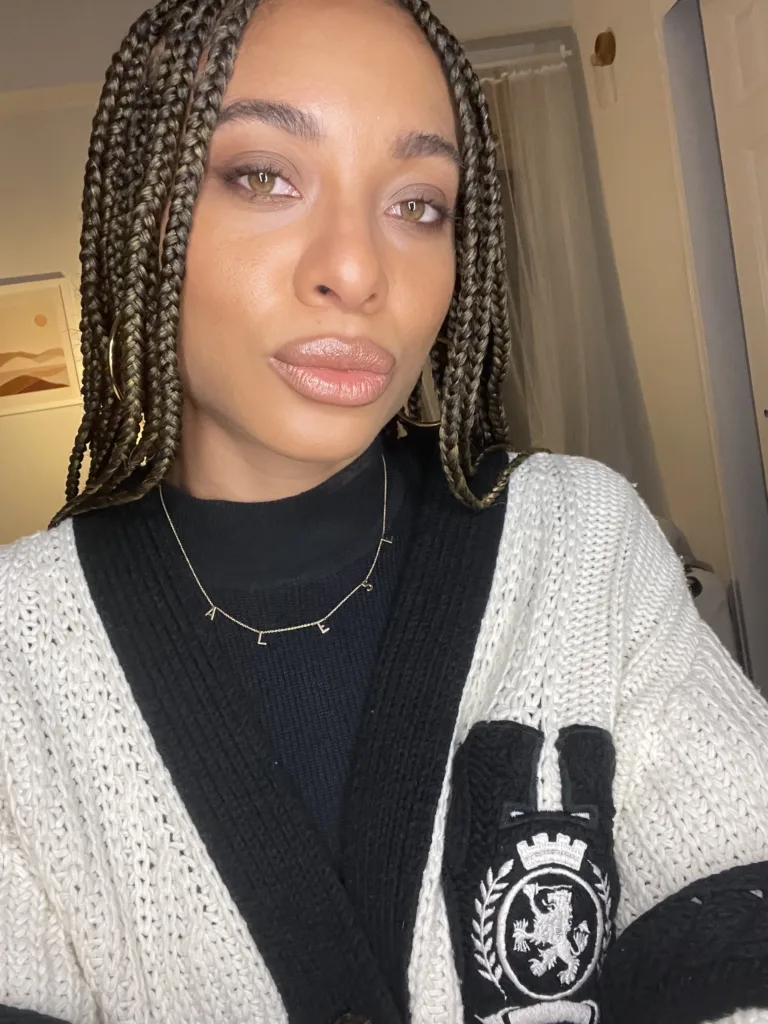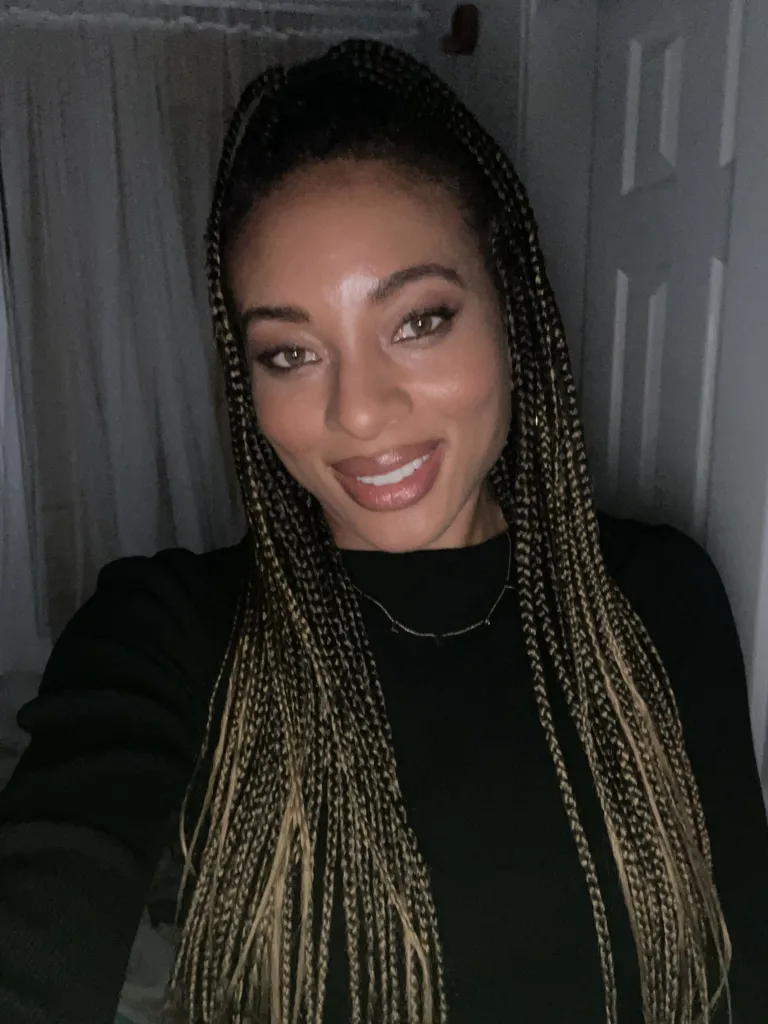
I love box braids. I’ve been wearing them for as long as I can remember. I have very fond memories of sitting between my aunt Jacqueline’s legs as she braided my hair in the summer, which allowed me to have carefree days running through the sprinkler, jumping in the pool and getting sandy at the beach. I always loved getting my hair done by aunt over the salon because of her gentle technique — the way she braided my hair laid flat and didn’t put tension on my sensitive scalp.
Imagine my surprise when I saw that the type of box braids my aunt always did for me had become the trendiest style of the 2020s — and now they were called knotless braids. Of course that’s not what we called them when she was doing them — we just called them box braids — but this technique has pretty much become the dominant way to do box braids. She was really ahead of her time in so many ways!
Knotless braids vs. traditional box braids
The difference between knotless braids and traditional box braids is all in the knot. Traditional box braids knot the hair at the root. Knotless braids are done by braiding an inch or two of the natural hair first, then feeding in the braiding hair. This technique allows the braids to lay much flatter on the head, creating a more natural look that’s easier to style in different ways like ponytails and buns.
Knotless braids put less tension on the scalp
While I have lovely memories of getting my braids done at home, I have not so great memories of getting my hair done at salons in Queens, where the braiders would do my hair extremely tightly.Too tight braids can cause traction alopecia, which is hair loss caused by the constant pulling of the hair, especially around the delicate hairline. A lot of us Black women, myself included, have suffered from traction alopecia, due to the tight hairstyles we do like braids, weaves, and wigs.

As someone with fine hair and a sensitive scalp, knotless braids are the perfect protective style for me and don’t ruin my delicate hairline I’ve worked so hard to grow back!
Read more: How platelet-rich plasma saved my edges
Best hair for knotless braids
I’ve tried a lot of different types of hair for my knotless braids. I have fine hair and a sensitive scalp, so I am easily irritated by synthetic pack hair. I highly recommend always rinsing braid hair before installing it. Many brands of braiding hair, especially synthetic hair, comes coated with chemicals. I wash my hair by filling up the sink with warm water, a gentle shampoo, and about two tablespoons of apple cider vinegar and adding the bundles to the sink. I let it soak for around a half hour, then rinse with cool water.
Read more: How to keep your boho braids looking fresh
I’ve been doing braids with human hair a lot recently, and my favorite brand right now is Starlet brand bulk braiding hair in straight. If I’m doing boho braids, I get the Starlet brand human hair in wet and wavy. If you’re doing boho braids, you must use human hair, no exceptions!
There are some great synthetic hair brands, too, for knotless braids. My go to has been the Sensationnel Synthetic Ruwa Pre-Stretched Braiding Hair. The hair is very lightweight and is water repellent.

All braids have the potential to damage your hair if not installed correctly. Make sure to go to a braider who is gentle — and speak up if don’t feel like they’re handling your hair with care!
This blog post contains affiliate links, which means that if you click on one of the product links and make a purchase, I may receive a small commission. Please note that I only recommend products that I personally use and believe in.

Leave a Reply